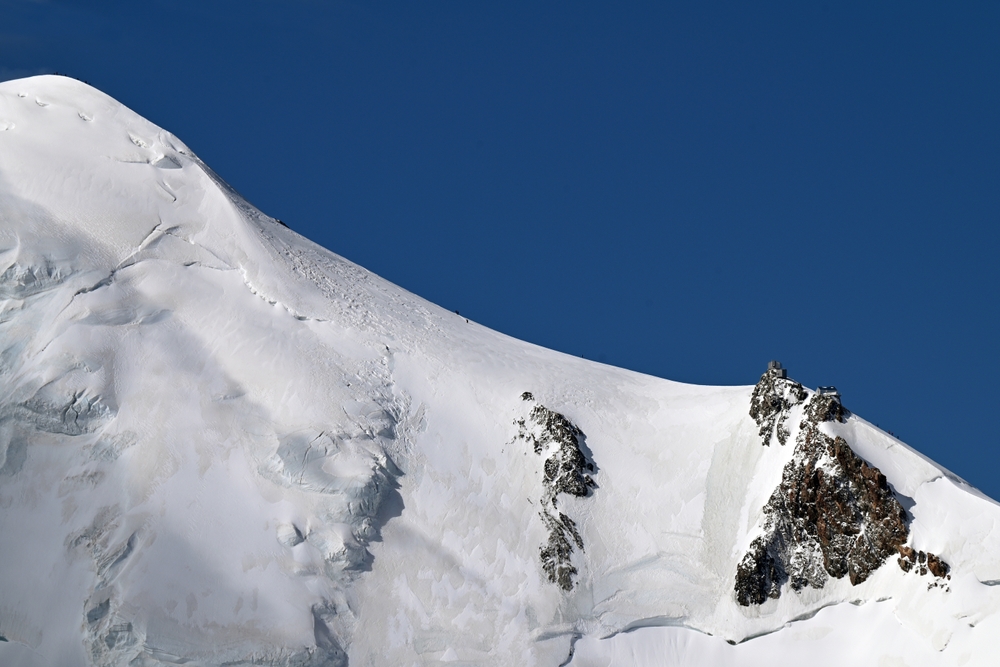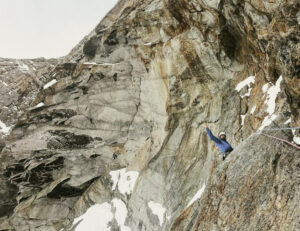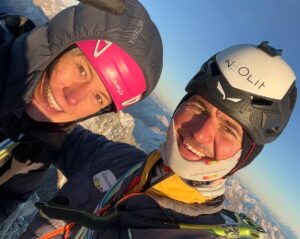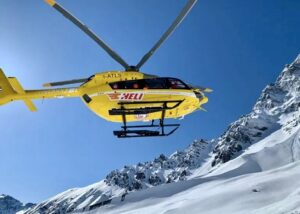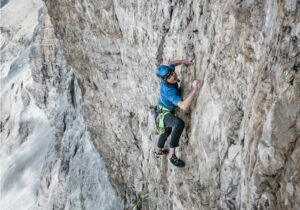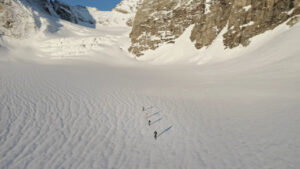Celebrated veteran climber Christophe Profit has again torn off the fixed ropes and pickets from the normal route of Mont Blanc, thus breaking the law a second time. The debate remains: Is the fixing right or wrong in this case?
The last time Profit removed security gear from Mont Blanc was in 2022, when he took the steel rods from Bosses Ridge. Authorities charged him with criminally removing gear that wasn’t his, while he maintained it was an “ethical protest” against excessive commercialization. Profit refused to plead guilty but was ultimately fined €600.
When the rods and fixed rope were replaced on Mont Blanc this year, Profit showed that he was far from repentant and removed them a second time.
It remains to be seen if he’ll face charges again.
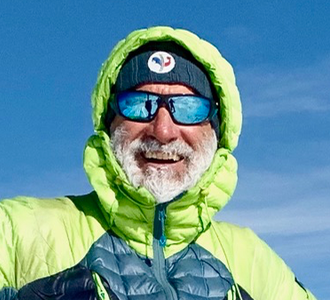
Christophe Profit. Photo: Wikipedia
Everest-like fixed ropes on Mont Blanc?
His action raises a broader question: Since when have there been fixed ropes on Mont Blanc’s summit ridge?
The normal route via the Dome du Gouter to Mont Blanc has a safety cable on its lower part. The cable crosses the rockfall-prone Grand Couloir du Gouter and continues along the route, which includes some exposed passages, to the Gouter Hut. This permanent safety element has long been familiar to guides and climbers.
The novelty is fixing Bosses Ridge to the summit. Located well above 4,000m on snow and ice, it must be renewed after every heavy snowfall.
“Traditionally, there is no fixed equipment on the Bosses Ridge of Mont Blanc,” says UIAGM guide Stuart Macdonald, who contributed to our Climbers’ Guide to Mont Blanc. “However, a few years ago, they fixed some metal pickets to make an icy section safer. Then this year, they did the same and apparently fixed a rope, too. Both times Christophe allegedly — I didn’t see him do it — removed them.”
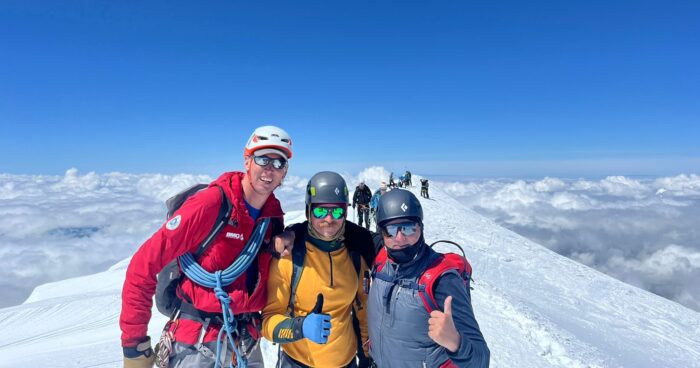
Stuart Macdonald (in red) with clients on the summit of Mont Blanc. Photo: S. Macdonald
Macdonald confirms there is more and more fixed gear in the Alps every season.
“It used to bother me, but there is so much [now] that I am growing used to it,” he said. He also noted that fixed gear speeds up climbers. This can be useful on exposed sections or complicated passages where long lines can form.
Open debate
The debate remains around style and mountaineering ethics.
On the one hand, the more equipment fixed on the mountain, the safer and faster climbers, especially the guided ones, will go. The epitome of geared-up normal routes in the Alps is the Matterhorn’s Hornli Ridge, with its thick ropes up a large part of the route and the iron pickets from which guides fast-belay their clients.
Seasonal gear on ice and snow has also increased in recent years. During the dry summer of 2022, two Everest-like aluminum ladders stretched across crevasses on the Grand Paradiso. The bergshrund of Mont Blanc du Tacul usually has them, too, as do some icy passes on the Trois Monts route to Mont Blanc.
If the priority is to have as many climbers as possible reach the top every day, alpine routes will evolve to mirror those of the 8,000’ers, where the routes are almost completely fixed. But in that case, those seeking “real” climbing must look elsewhere than the normal routes during summer.
Moreover, if ropes and metal bars protected every difficult or exposed section, some amateur climbers might decide that this was enough to keep them safe, and that they did not need a guide.
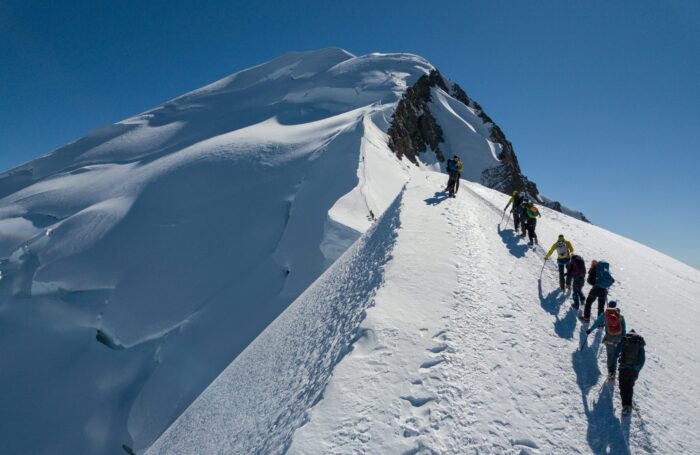
Climbers on the Bosses Ridge to the summit of Mont Blanc. Photo: Adventure Base
Christophe Profit is a legendary climber with an impressive resumé and a deep respect for the spirit of mountaineering. But does that give him the right to decide unilaterally what remains and doesn’t on the mountain? And why are the snow pickets and ropes wrong when other permanent equipment, from metal poles to cable cars, are okay?
